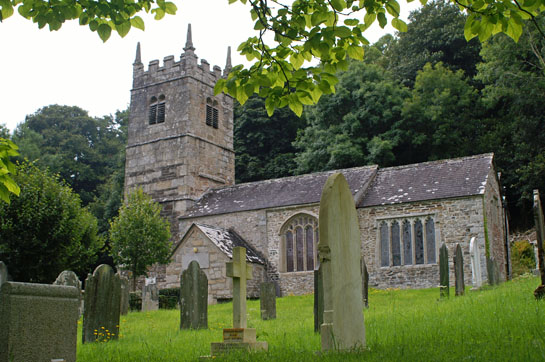|
Alphabetical List |
|
|
|
|
|
|
|
County List and Topics |
|
|
|
Please sign my Guestbook and leave feedback |
|
|
||||||||||||||||||||||
|
refurnish the church with new benches, pulpit, altar cloth and soon with the Baring-Gould coat of arms and colours - blue and mustard yellow! Sabine went much further. Widely travelled, he assembled church furnishings from all over Europe - Switzerland, France, Germany and Belgium! The 1520 rood screen had been demolished so Sabine reassembled the fragments he found in the church tower using an historic painting as a guide. To say it is out of proportion is an understatement. He reinstated some old bench ends and poppy heads that, again, had been removed, and these are worthy of study. The Lewtrenchard Church is crammed with memorial tablets of the Baring and Gould families. Sabine added to this by rescuing some from Staverton Church in Derbyshire that the Vicar had thrown into the churchyard as part of his own church “modernisation” program! John Betjeman, no less, was later to imply criticism for what he saw as some sort of act of sacrilege - surely unaware of the circumstances? So what we have today is an engaging church, full of the whims and fancies of a truly eccentric Englishman. They don’t make them like Sabine Baring-Gould any more! |
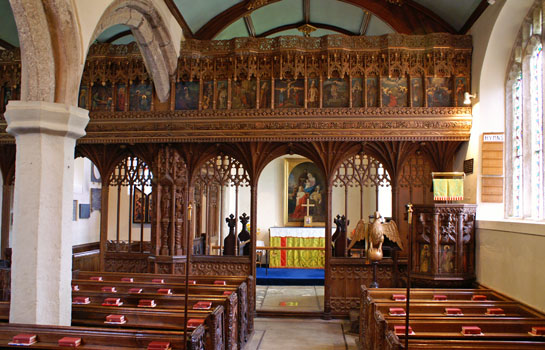 |
|||
 |
|||
|
Left: Looking towards the east end. The altar painting is a copy of one by Paul Deschwanden in Freiburg Church. The lectern is from Brittany. The pulpit and benches were installed by Sabine’s father, Charles. Right: The enthusiastically restored rood screen. Over-large it may be, but it is surely not unattractive? |
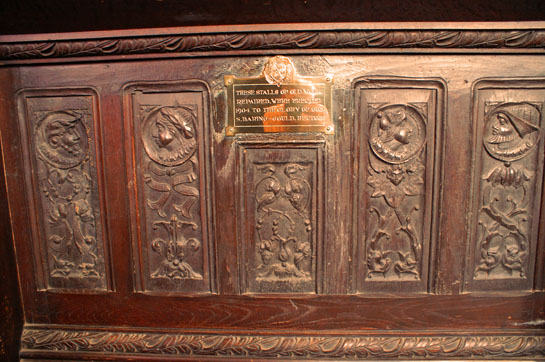 |
|||
 |
|||
|
Left: Looking towards the west end, this is an eccentric but pleasant church and, considering its tiny parish, benefits greatly from the love the Baring-Goulds bestowed upon it. Right: The brass plate reads “These stalls of old work repaired, were erected 1904 to the glory of God. S Baring-Gould rector.” |
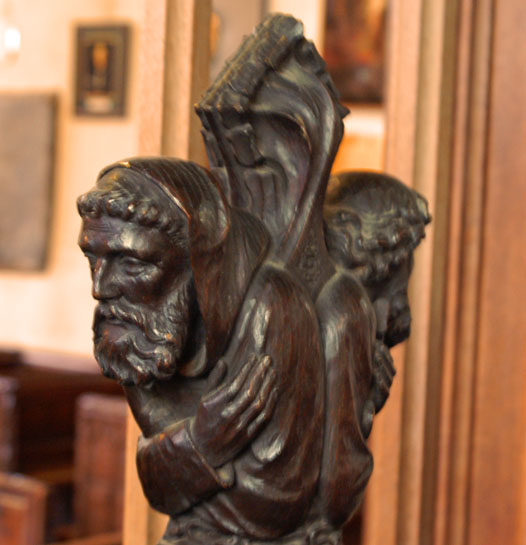 |
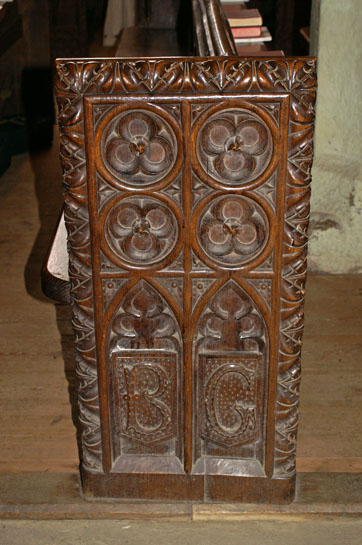 |
||||||||||||||||||||||||||
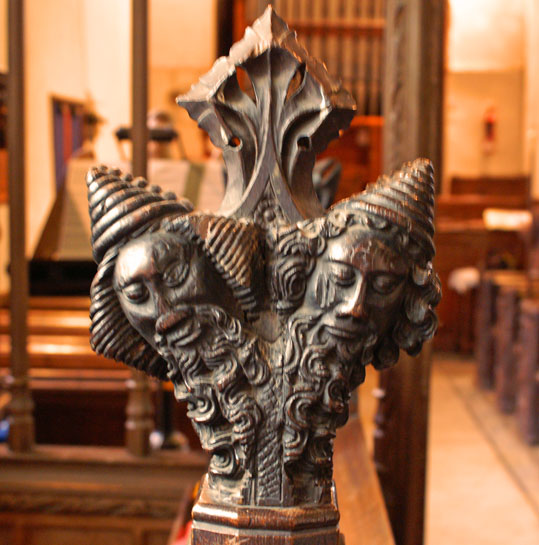 |
|||||||||||||||||||||||||||
|
Left and Centre: Poppy Heads which look original, although they may have been restored. Right: One of Charles’s “BG” bench ends! |
|||||||||||||||||||||||||||
 |
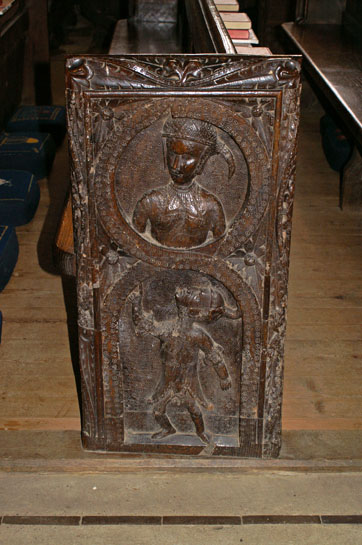 |
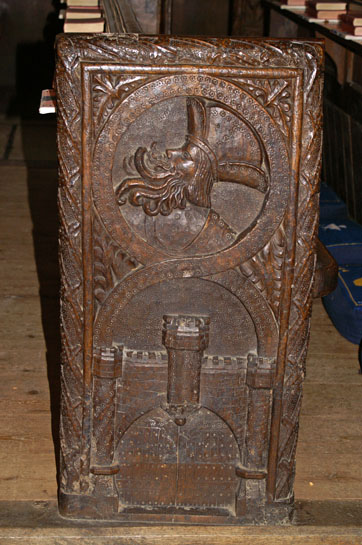 |
 |
||||||||||||||||||||||||
|
Sabine reinstated, repaired, restored and copied bench ends, so it is difficult to know what is genuinely mediaeval. My guess is that these four are. The one on the right depicts St Michael, the “leader” of the archangels. In Revelations St John saw him in Heaven leading a war against Satan. He is therefore portrayed with armour and sword and trampling a dragon - Satan - underfoot. The pope-like figure on the left looks ancient, but there are several signs of restoration, most obviously on the surround where you can literally “see the joins” and on the orb and cross being held in the hand. |
|||||||||||||||||||||||||||
 |
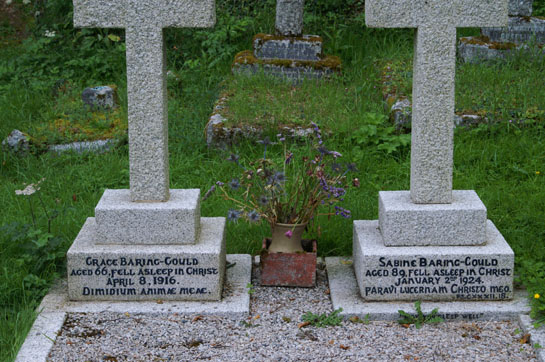 |
||||||||||||||||||||||||||
|
Left: The hotchpotch of ancient and modern is obvious from this picture of bench ends in the nave. Right: The resting places of Sabine and his wife, Grace. Sabine was larger-than-life in so many ways, but this contrasts with the modesty of his monument. |
|||||||||||||||||||||||||||
|
Footnote |
|||||||||||||||||||||||||||
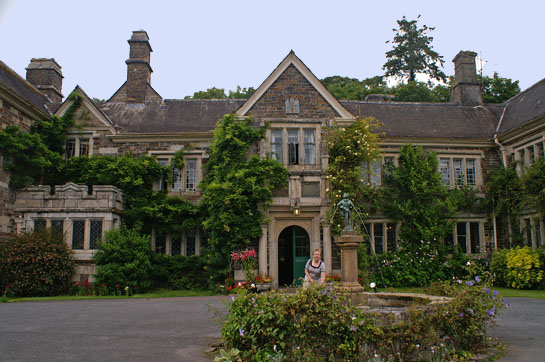 |
|||||||||||||||||||||||||||
|
Edith Ackford was the Head Cook for Sabine Baring-Gould towards the end of c19. Her husband was the Head Coachman. They had a baby that died in early childhood and was buried in the churchyard under a wooden monument that has long since disappeared. Edith’s pregnant younger sister, Joanna, later turned up at Lewtrenchard looking for succour from her sister. Sabine Baring-Gould allowed her to stay in the Coach House with her sister and brother-in-law. The baby, Beatrice, was born in 1898. Joanna knew that she could not find domestic employment if she was accompanied by a baby so she left to seek her fortune, leaving the baby with Edith. Childless Edith brought the child up as her own with the approval of Sabine. As the child grew older she played with Sabine’s children and attended many of their lessons with their governess. As Sabine and his wife, Grace, had fifteen children presumably one more did not make a lot of difference! There is a story - we like to think it is true - that Baring-Gould once asked Beatrice “Which number child are you?” As Sabine’s fourth child was herself called Beatrice this was presumably a case of mistaken identity! We do not know when Edith and her husband left Lewtrenchard. Beatrice was my partner Diana’s grandmother. We do not know what became of Joanna - certainly she never came back for Beatrice - but Edith was always thought of as being Diana’s Great Grandmother and Diana knew her well. Thus this visit to both the House and the Church was an emotional one for her. In an age where domestic servants were routinely dismissed in disgrace for being pregnant (even if the master or his son was the father!) we must admire the philanthropy of Sabine who sheltered Joanna and her baby, accepted her living with Edith and her husband, and contributed to her upbringing. Finally, our special thanks to the hotel staff in Lewtrenchard House who made us welcome, exchanged information with Diana, and allowed us to wander around taking photographs. We could not have expected such hospitality. |
|||||||||||||||||||||||||||
|
|
|||||||||||||||||||||||||||
